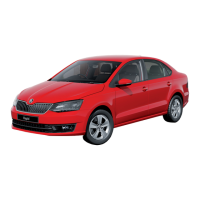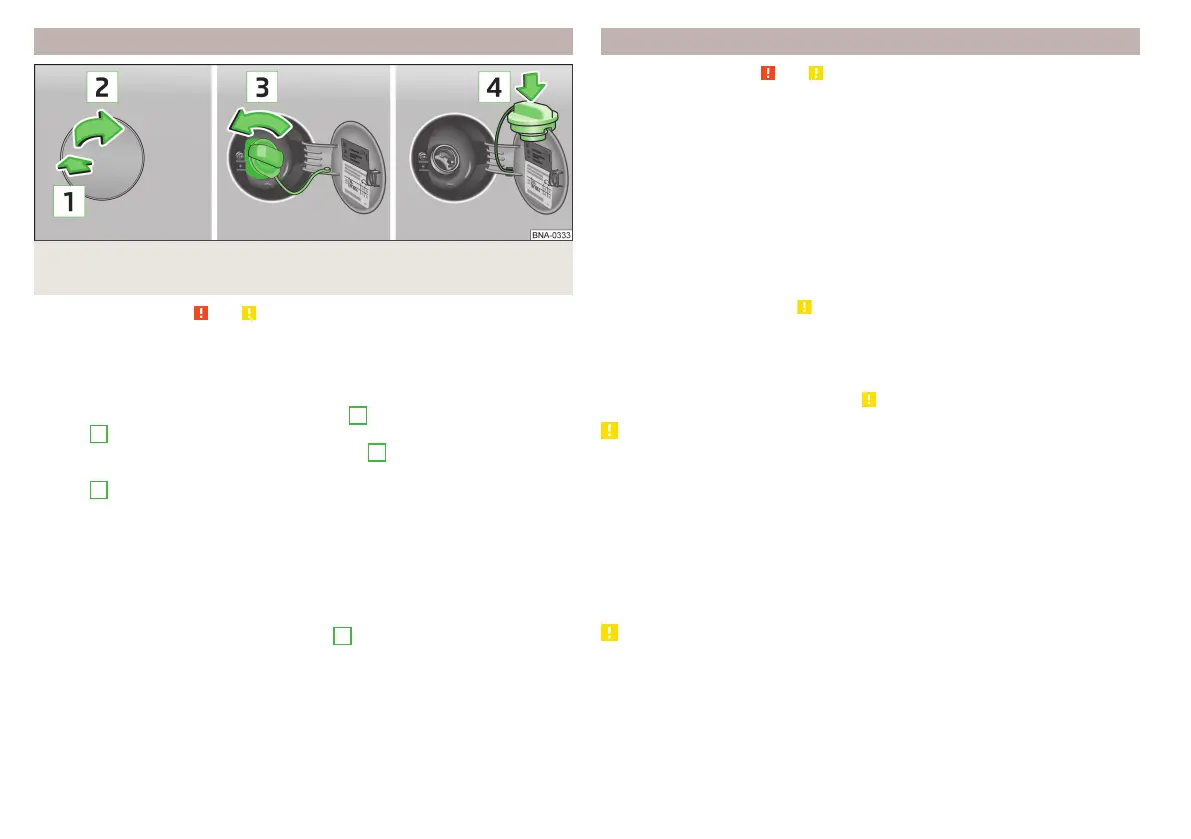Petrol Refuelling
Fig. 74 Opening the fuel filler flap/unscrewing the tank cap/placing the
tank cap on the fuel filler flap
Read and observe and on page 73 first.
Perform refuelling under the following conditions.
The vehicle is unlocked.
The ignition is switched off.
›
Press the fuel filler flap in direction of arrow
1
and fold in the direction of
arrow
2
» fig. 74.
›
Unscrew the tank cap in the direction of arrow
3
.
›
Remove the tank cap and place it on top of the fuel filler flap in direction of
arrow
4
.
›
Insert the pump nozzle into the fuel filler tube as far as it will go.
The fuel tank is full as soon as the pump nozzle switches off for the first time.
Do not continue refuelling.
›
Remove the pump nozzle from the fuel filler tube and put it back in the
pump.
›
Place the filler cap onto the fuel filler neck and turn it in the opposite direc-
tion to the arrow until it securely engages
3
.
›
Close the fuel filler flap until it clicks into place.
Unleaded petrol
Read and observe and on page 73 first.
The correct fuel for your vehicle is specified on the inside of the fuel filler
flap» fig. 74 on page 74.
The vehicle can only operate with unleaded petrol that meets standard EN
228, and contains maximum 10% bioethanol (E10).
Prescribed petrol 95 / min. 92 or 93 RON / ROZ
We recommend using petrol 95 ROZ.
Optionally, the petrol 92 or. 93 ROZ can be used (slight power loss, a slightly
increased fuel consumption).
In an emergency petrol 91 ROZ can be used (slight power loss, slightly in-
creased fuel consumption) » .
Specified petrol is unleaded, min. 95 RON / ROZ
Use min. 95 ROZ petrol.
In an emergency, 91. 92 or93 ROZ petrol can be used (slight loss of power,
slightly increased fuel consumption) »
.
CAUTION
The following instructions must be observed, otherwise there is a risk of dam-
age to the engine and to the exhaust system.
■
When petrol with a lower than the prescribed octane is used, only continue
driving at mid-range engine speeds and with minimal strain on the engine. Re-
fuel using petrol of the prescribed octane number as soon as possible.
■
Lower than 91 octane petrol should not be used, even in an emergency!
■
If a fuel other than unleaded fuel which complies to the above mentioned
standards (e.g. leaded petrol) is put in the tank by mistake, do not start the en-
gine or switch on the ignition.
CAUTION
Additives - The following instructions must be observed, otherwise there is a
risk of engine damage and damage to the exhaust system.
■
Do not use petrol containing metal-based additives, e.g. manganese, iron,
lead, and do not use, for example, any LRP petrol – lead replacement petrol.
74
General Maintenance

